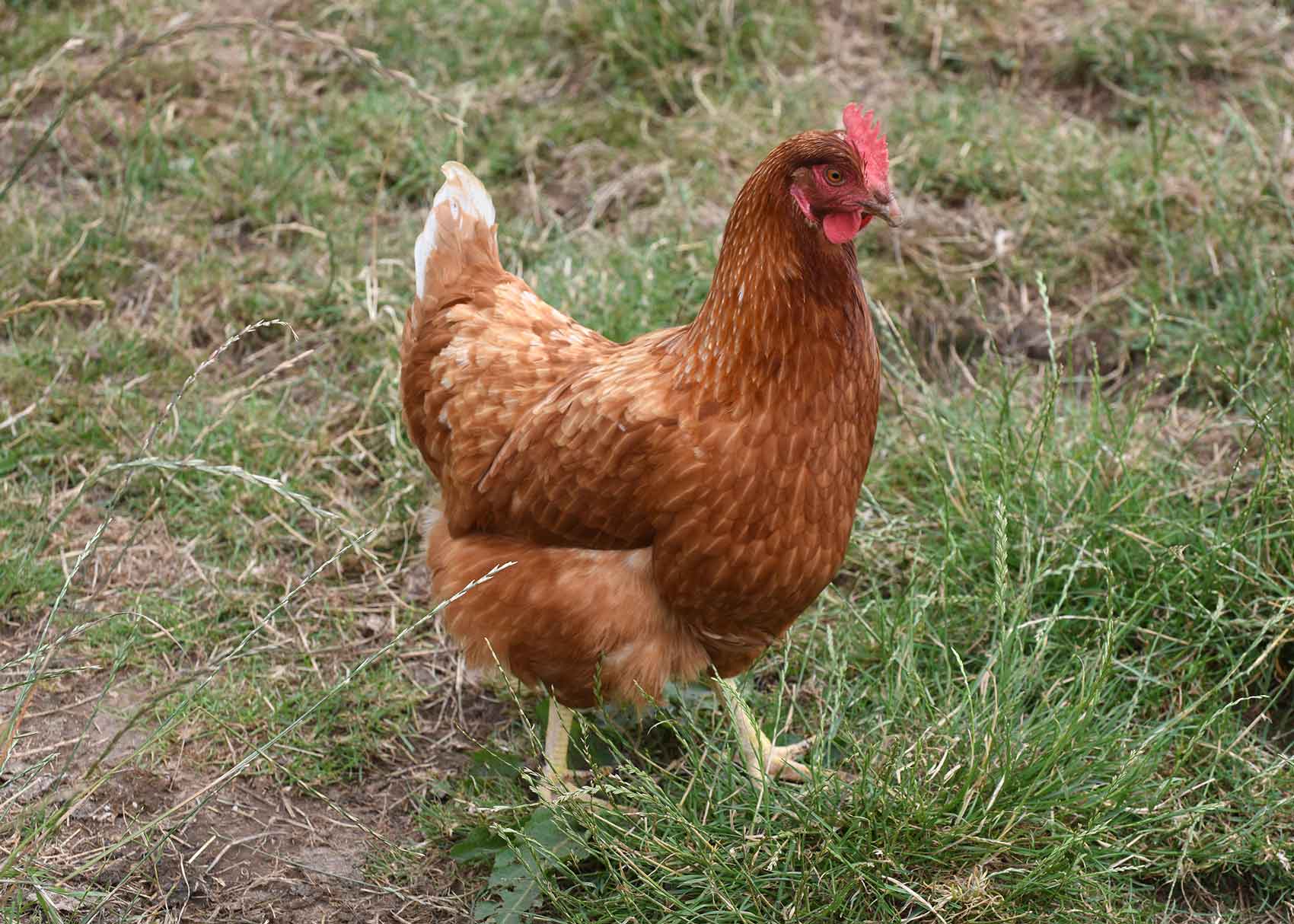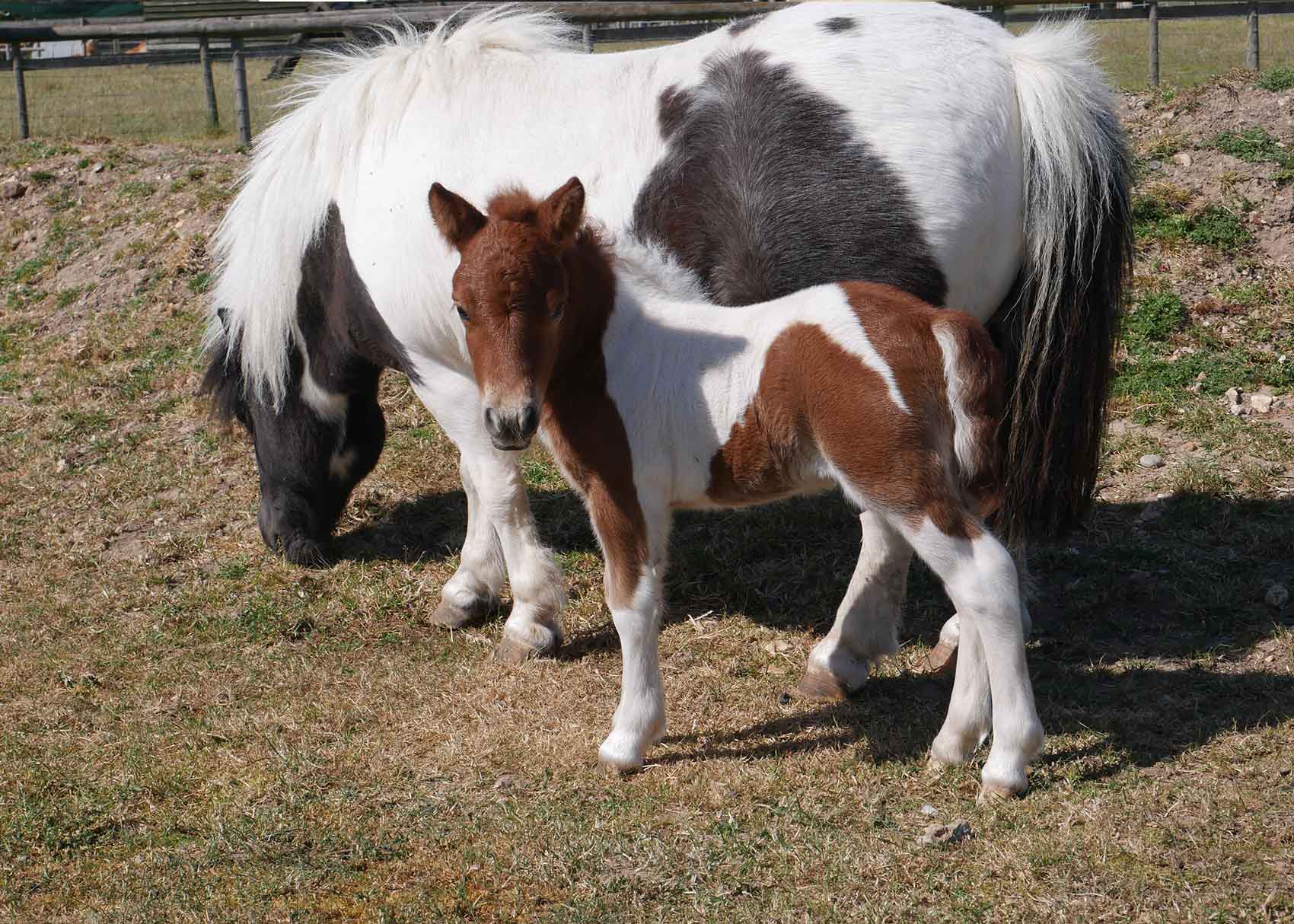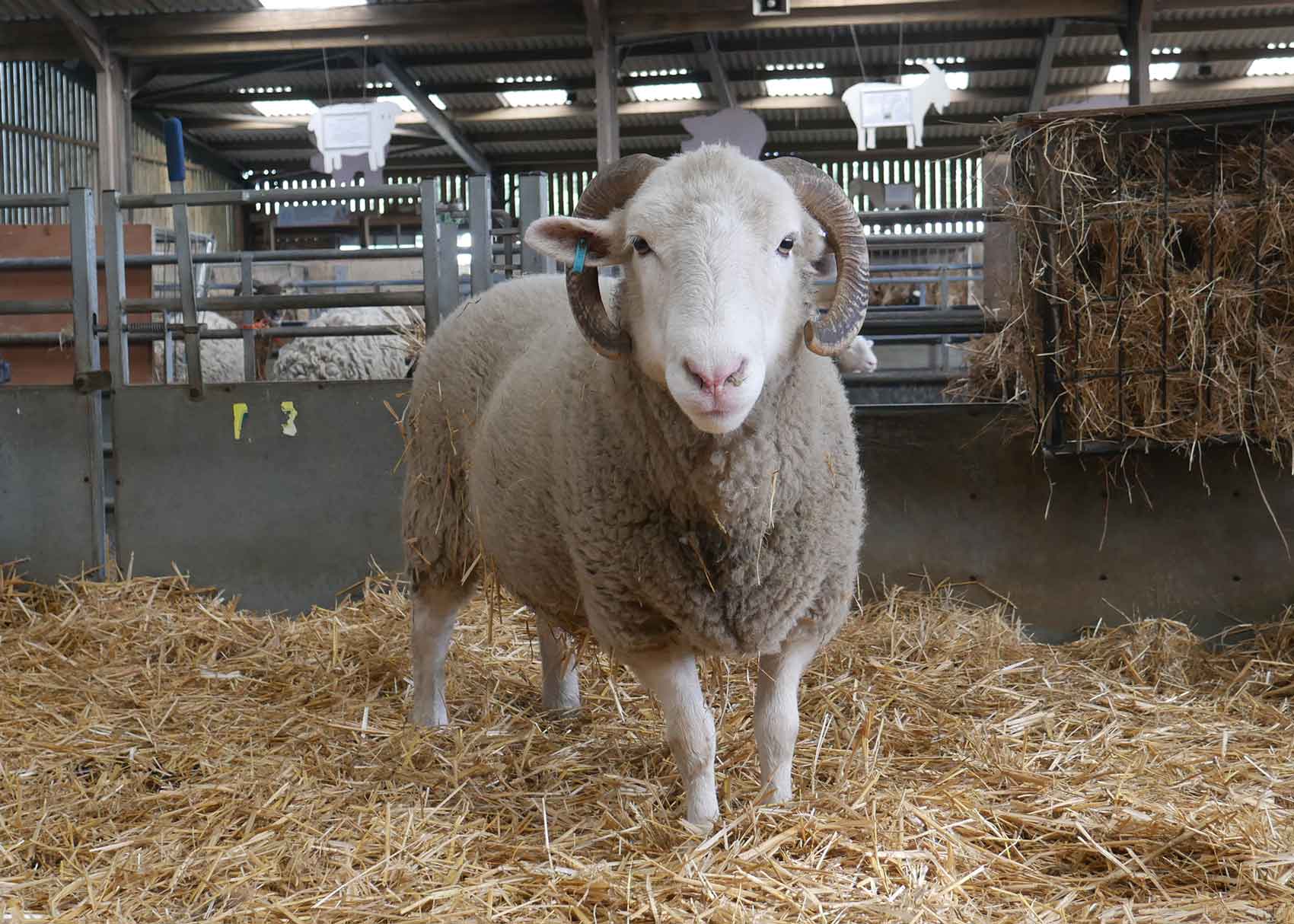Did you know?
The Rare Breed Survival Trust classes Poultry under threat as Priority Breeds.

Buff Orpington Chicken
How rare are they?
Buff Orpington Chickens are not under threat.
Where does the Buff Orpington Chicken come from?
The Buff Orpington was introduced in 1894 to satisfy the demand for buff coloured birds. The new variety was achieved by crossing gold spangled Hamburg cocks with dark and red Dorking hens and then mating the offspring pullets with Buff Cochin cocks. They were named after the town of Orpington in Kent where they were bred.
Why are they at Odds Farm Park?
In addition to being attractive birds for visitors to see on their day out, Odds Farm Park are actively bolstering this rare breed’s numbers. We have not had them since 2003 but re-introduced them again in 2009.
How can you recognise their eggs?
Their eggs are cream to light brown, of an average size and taste great. With a strong tendency to sit on their eggs, the Buff Orpington Hens make great mothers.
How would children identify the Buff Orpington at Odds Farm Park?
The heavy soft feathers of the Buff Orpington Chickens make these already large birds, look even bigger. Children on a day out will find them extremely attractive with their soft almost fluffy appearance, rich golden colour and gentle contours.

Crollwitzer Turkey
How rare are they?
Crowlitzer Turkeys are classed as a Priority Breed by the Rare Breed Survival Trust, which means they are under threat.
Where does the Crollwitzer Turkey come from?
Originating from Germany, the Crollwitzer Turkey is similar to the Pied Turkey but smaller.
Why are they at Odds Farm Park?
The Crollwitzer Turkey is a very attractive looking turkey to see on a day out. The Turkeys at Odds Farm Park have beautiful white fanned tails.
How can you recognise their eggs?
Their eggs are very large and slightly speckled and they lay them in dark places for perfect incubation.
How would children identify a Crollwitzer Turkey?
Children can identify the Crollwitzer Turkey at Odds Farm Park by its striking black and white plumage. It is a small breed of turkey, very beautiful and shouldn’t be missed on a day out.

Polish Chicken
How rare are the they?
The Polish Chicken is not under threat.
Where does the Polish Chicken come from?
Surprisingly, the Polish Chicken originates from Holland, not Poland. Initially bred for its eggs, today the Polish Chicken is bred mainly as a show bird.
Why have them at Odds Farm Park?
The Polish Chicken are at Odds Farm Park simply because of their striking appearance.
How can you recognise their eggs?
Their eggs are pure white and small. Polish Chickens do not generally sit on their eggs to keep them warm and therefore to successfully breed Polish Chickens, the eggs need to be put in incubators or put with other chicken breeds that will sit on their eggs and hatch them. However at Odds Farm Park for the last 2 years our Polish Chickens hatched out their own eggs and reared them successfully themselves.
How would children identify the Polish Chickens at Odds Farm Park?
On a day out, children can identify these beautiful birds by their explosive topknot of feathers, sometimes in a contrasting colour to their body color. The topknot of feathers usually obscures their vision, making them calmer than other chickens.
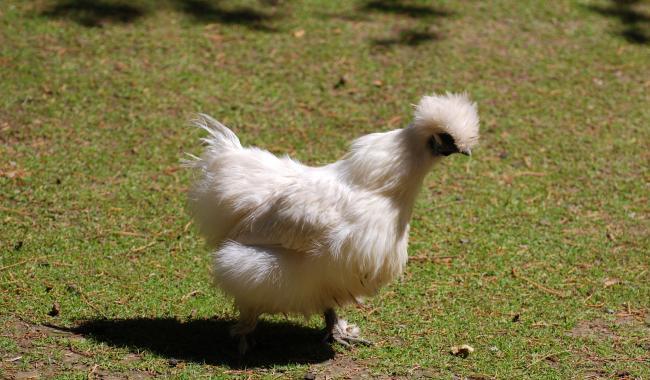
Silkie Chicken
How rare are they?
The Silkie Chicken is not under threat.
Where does the Silkie Chicken come from?
Silkie Chicken originates from the Far East and arrived in Europe about 200 years ago.
Why have them at Odds Farm Park?
The Silkie Chicken is at Odds Farm Park because they are very adorable, fluffy and a friendly breed.
How can you recognise their eggs?
This breed lays about 100-200 eggs each year. It is easy to recognise their eggs as they are a creamy-brown colour. The Silkie Chicken is known to stop laying eggs during the summer months when it’s warmer.
How would children identify the Silkie Chicken at Odds Farm Park?
Its is easy to identify this breed as they are fluffy and adorable like kittens. These chickens have very soft fine feathers which can be black, white, grey or gold. This breed usually has a black coloured face, bones, skin, their flesh is a dark grey-blue which is also a similar colour to their beak. What makes the Silkie Chicken amazing is the fact that they have five toes and blue earlobes.

Wyandotte
How rare are they?
The Wyandotte Chicken is not under threat.
Where does the Wyandotte Chicken come from?
The Wyandotte Chicken breed originates from the United States and was first recognised in 1870s.
Why have them at Odds Farm Park?
This breed comes in 17 beautiful colours and it’s amazing to see their striking appearance. You can also easily recognise them by their strong personalities.
How can you recognise their eggs?
The Wyandotte Chicken lays roughly about 240 eggs and is great at laying their eggs in the winter months. You can easily recognise them, as the eggs are light to rich brown in colour.
How would children identify the Wyandotte Chicken at Odds Farm Park?
The Wyandotte is a medium-large sized bird and has a classic rounded shape. Their feathers are often laced and look very attractive. They are also loosely fitted and broad which can make them look fluffy. You will recognise their legs as they are a classic yellow colour and their wattles and comb are a deep red.
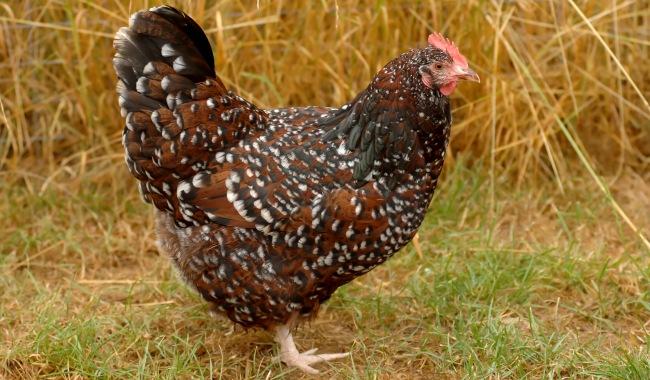
Speckled Sussex
How rare are they?
Sussex Chickens are classed as a Priority Breed by the Rare Breed Survival Trust, which means they are under threat.
Where does the Speckled Sussex come from?
The Speckled Sussex originated from England in the time of the Roman conquest of Britain.
How can you recognise their eggs?
You can identify the eggs as they are tinted or light brown. They lay their eggs all the way through winter. One adult Speckled Sussex will lay roughly about four or five eggs each week. Their eggs can sometimes be small compared to their size.
Why have them at Odds Farm Park?
Children will adore this chicken at Odds Farm Park. The Speckled Sussex chicken is known as a friendly, kind and gentle breed. We’re sure you’ll love this cheerful and comical breed.
How would children identify with the Speckled Sussex Chicken at Odds Farm Park?
This breed is a medium size. You will notice that it has a mahogany colour plumage base and it has speckled feather tips, which makes this breed very attractive. They also have red or orange coloured eyes and even red earlobes. Their feet and skin are normally white. This breed is also docile and has a curious yet a mellow personality. You will notice that this breed becomes more beautiful with age.

Belgium d'uccles
How rare are they?
The Belgium d’uccles is not under threat.
Where does the Belgium d’uccles come from?
This breed originates from a town of Uccle on the outskirts of Brussels in Belgium in the early 19th Century. Micheal Van Gelder developed this breed and named it after its home town – Uccle in Belgium.
Why have them at Odds Farm Park?
Children will love the Belgium d’uccles as they are friendly and gentle. These chickens are charming and is a very calm bird. You can easily notice them as they have a strong, upright proud appearance.
How can you recognise their eggs?
This breed produces small eggs which are creamy or tinted colouring. The Belgium d’uccles can lay about 2-3 eggs per week.
How would children identify the Belgium d’uccles at Odds Farm Park?
This breed is quite short and has a broad body with a well developed neck. This breed has a short beak which is curved and they have a single comb and a strong head. They have large bright eyes and the colour will vary according to the plumage. These chickens have short thighs and four toes that are straight and evenly spread.

Barnevelder
How rare are they?
The Barnevelder Chicken is not under threat.
Where does the Barnevelder Chicken come from?
The Barnevelder Chicken originates from a town called Barneveld in Netherlands (Holland) at the beginning of the 1850s.
Why have them at Odds Farm Park?
Children will love this docile friendly bird as they enjoy human contact. The Barnevelder Chicken make excellent mothers and loves to nurture their chicks when they are hatched. Children will enjoy this pleasant breed.
How can you recognise their eggs?
This breed lays about 180-200 eggs per year. They are sought after because of their coppery brown eggs and lay their eggs throughout the winter months. However, now they tend to produce lighter coloured eggs.
How would children identify the Barnevelder Chicken at Odds Farm Park?
The Barnevelder Chicken has an upright stance, broad breasts and a concave back. It has a single comb and red ear lobes. You will instantly notice that this breed has reddish coloured eyes and yellow shanks and toes. Their plumage is normally black or brown. Their features are usually a mixture of colours including black, brown, white, blue and silver. Did you know these chickens don’t tend to fly as much because they have shorter wings.
